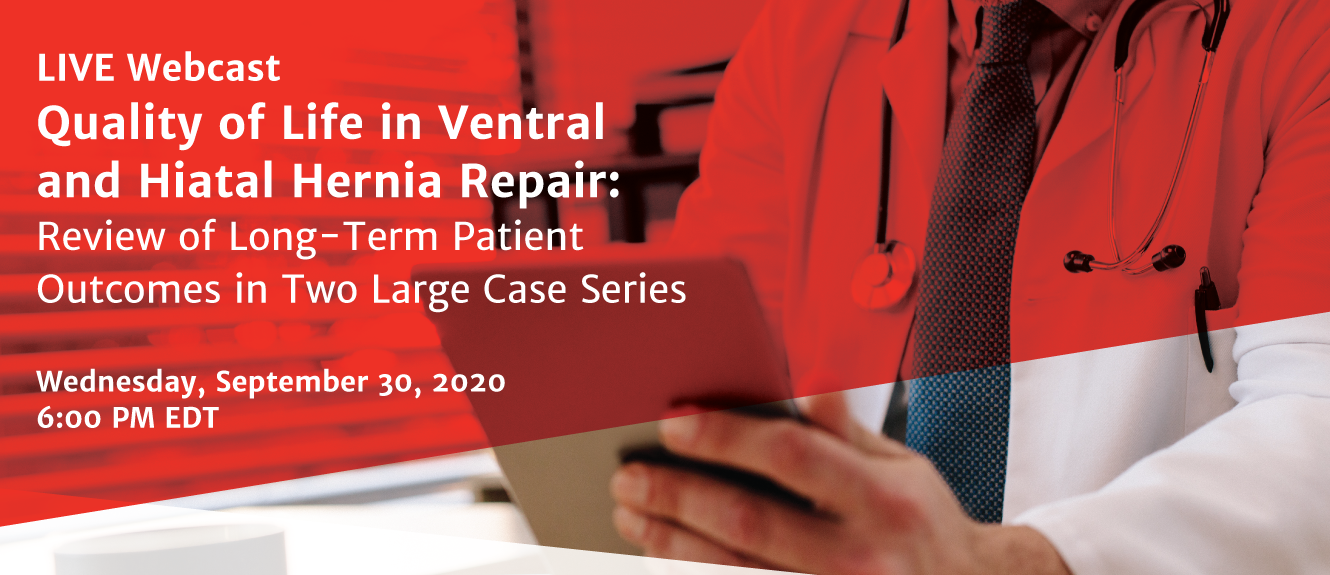
Quality of Life in Ventral and Hiatal Hernia Repair: Review of Long-Term Patient Outcomes in Two Large Case Series
Originally Broadcast: Wednesday, September 30, 2020 | 6:00 PM EDT
During this evening of Virtual Clinical Discussion (VCD), John Scott, M.D. (Greenville, SC) will cover 7+ years of data and quality outcomes in a large case series with GORE® BIO-A® Tissue Reinforcement in Hiatal Hernia Repairs, and Eric Mallico, M.D. (Salisbury, NC) will cover 4+ years of data and quality outcomes with GORE® SYNECOR Intraperitoneal Biomaterial in Ventral Hernia Repairs.
A fundamental goal of hernia repair is providing a durable closure. Whether early or late, hernia recurrence is a complication associated with patient dissatisfaction and increased costs. Unlike many once-promising reinforcement materials abandoned as a result of failure or adverse outcomes, the poly(glycolide:trimethylene carbonate) (PGA:TMC) copolymer bioabsorbable web scaffold GORE® BIO-A® Tissue Reinforcement remains a proven option for hernia repair after 10 years of widespread use. Two distinct and extensive experiences with this bioabsorbable scaffold material—alone or incorporated into the hybrid hernia repair device GORE® SYNECOR Biomaterial — demonstrate why appropriate tissue reinforcement with these unique biomaterials has been shown to lower the risk for hernia recurrence and may also preserve quality of life (QOL) for patients.
Presenters:
 John D. Scott, M.D.
John D. Scott, M.D.
Clinical Professor of Surgery
University of South Carolina School of Medicine Greenville
Metabolic and Bariatric Surgery Director
Prisma Health-Upstate
Greenville, South Carolina
 Eric J. Mallico, M.D.
Eric J. Mallico, M.D.
Director of Bariatric Surgery
Novant Health
Salisbury, North Carolina

